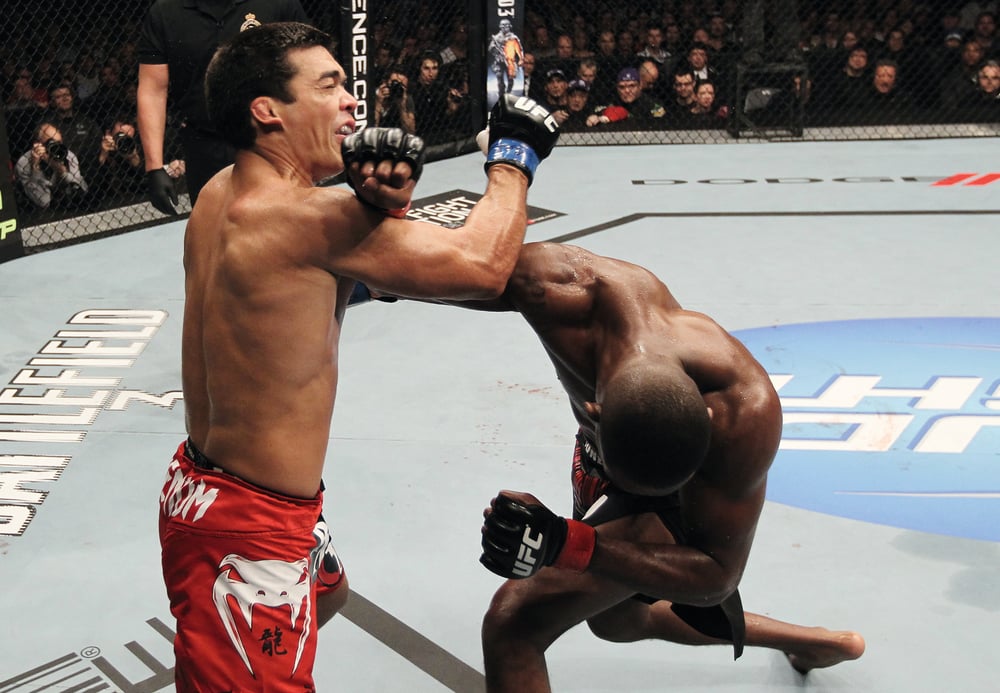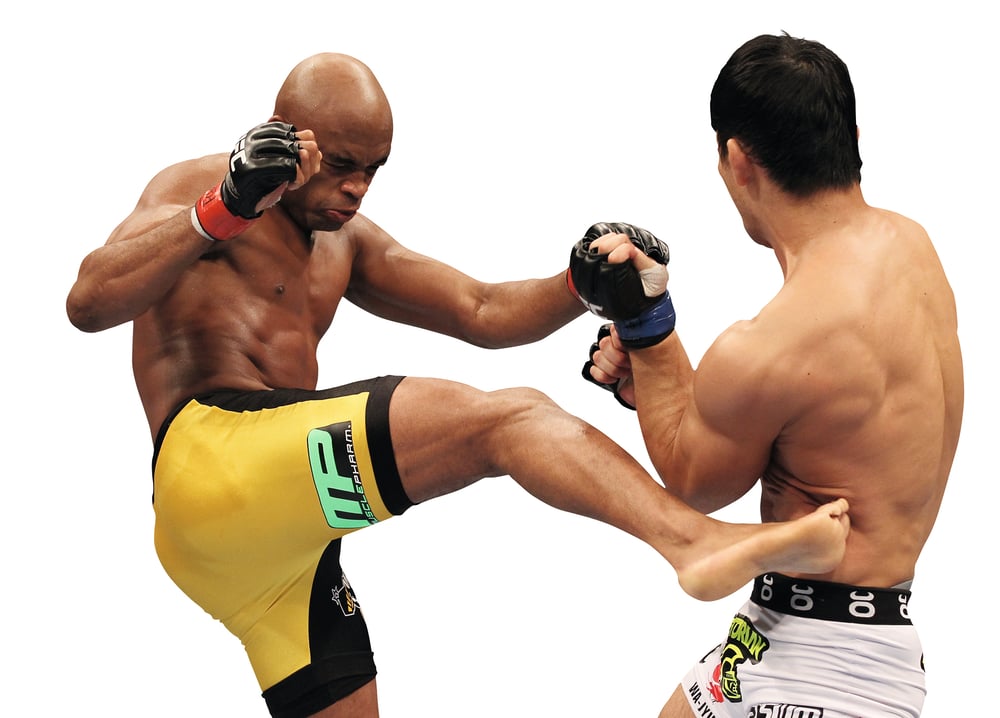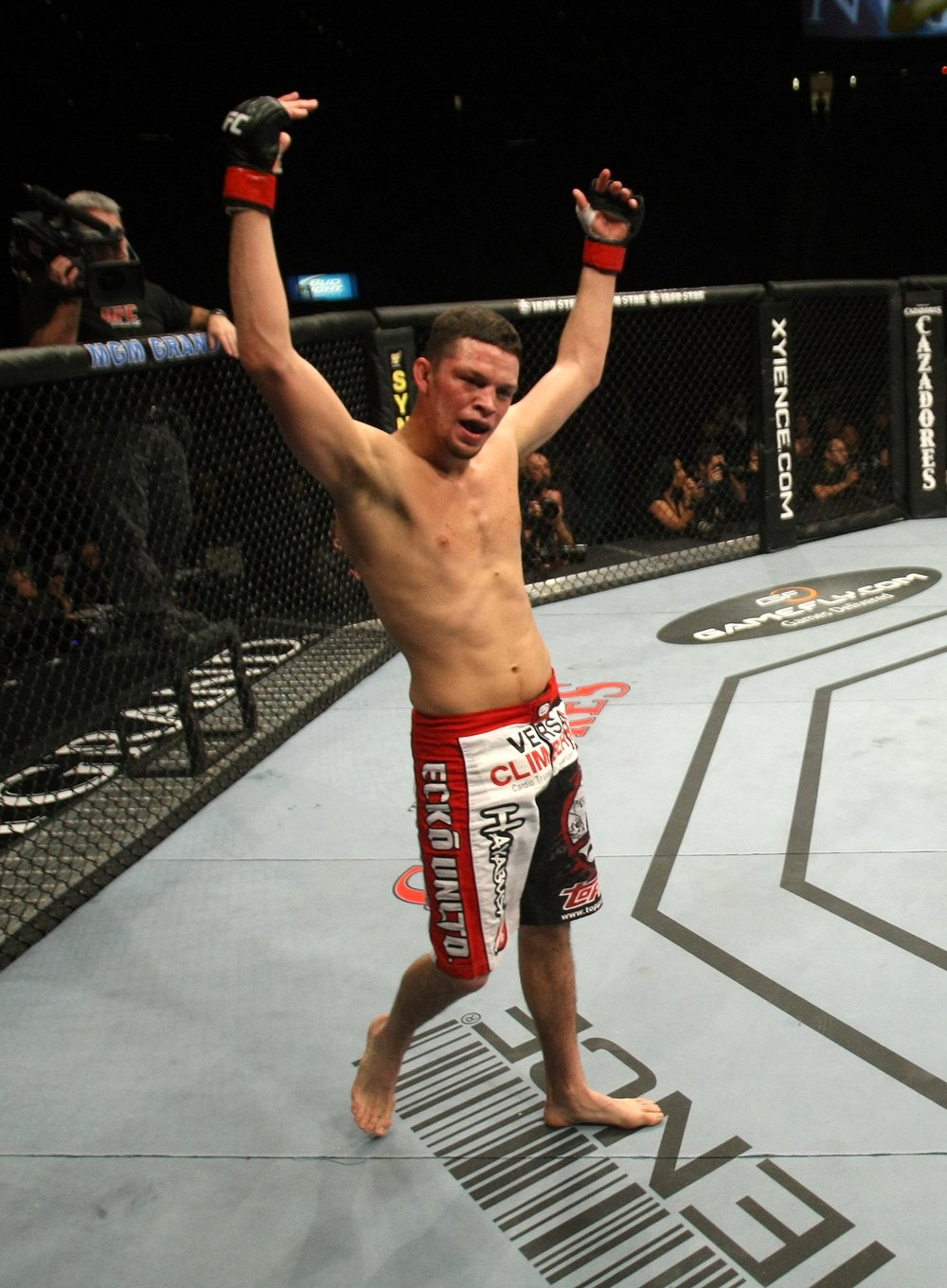
Issue 104
August 2013
Float like a butterfly, sting like a bee. Muhammad Ali changed the face of fight sports with his dancing, elusive style. To this day, feints, fancy footwork and the skill of faking movements can turn a good fighter into a great one. FO takes some tips from Tristar head coach Firas Zahabi
Some of the best competitors in the UFC have the ability to confuse, deceive, frustrate and fake their opponents into making the kind of mistakes that can end a bout. Think of the likes of Anderson Silva and his snake-like ability to hypnotize his challengers, or the fluid talents of the ever-elusive Dominick Cruz.
On the flip side, consider Clay Guida’s hyperactive movement, or Nick and Nate Diaz and their trash talking and hand gestures aimed to provoke. Whilst all these athletes are very different fighters they all have the ability to use tactics that throw off their opponent’s rhythm.
In a sport that is so often about imposing your will first, fakes and feints are an effective and intelligent tool for doing just that. Under the tutelage of Firas Zahabi, the athletes at Tristar Gym, based in Montreal, Canada, have been utilizing this skill-set for some time, giving the likes of welterweight champion Georges St Pierre and rising star Rory MacDonald an added edge to their game.
“I believe you have to feint with the whole body. Just faking with the hands won’t achieve anything,” says Firas, in an exclusive interview with FO. “An experienced fighter won’t bite if you just throw up your hands. He’ll recognize intuitively that your body is not moving. You really have to train the whole body and be seamless.”

Clearly, just pointing or throwing up your hands to create distractions doesn’t cut it with the Canadian coach. “Feinting is all about co-ordination. It can’t be mechanical or jerky; it has to be smooth otherwise your opponent won’t bite. People feint and they do it at a hyper-speed but that is too obviously fake. It has to be smooth and seamless.”
Making your deceptions a part of your whole game so it all flows is massively important when it comes to being effective. “The other important thing to remember is you have to mix your fakes with your actual strikes,” Zahabi adds. “Less experienced fighters will either fake or attack but you have to be doing them both. It’s a question of co-ordination.
“A good striker will continue to feint and strike the whole way through, so you never know which is fake and which is real.” He adds: “A great example of an extremely well executed fake was the Jon Jones fight against Machida. In the first round Jones was kicking the leg of Machida and every time Machida did the same counter: blitzing with his left hand and he would tag Jon.
“After round one you could see Greg Jackson tell Jon to throw the Superman punch. The Superman punch involves throwing a fake kick first and then a cross behind it. Jon threw the Superman and Machida bit on the fake hard. Machida missed on the counter because Jones was expecting it and landed his cross. That was the beginning of the end in that fight. It was a great call by Greg, and a great execution by Jon.”

Both current UFC middleweight champion Anderson Silva and bantamweight number-one Dominick Cruz are fantastic at using their footwork to elude and attack, as well as employing a seamless mix of feints and strikes in their offense.
“Of course, the master is Anderson Silva. I watch his fights and I still don’t know what he’s going to do,” says Firas. “He’s got such an arsenal of strikes and an ability to create angles you don’t know if he’s going to throw a spinning back-fist or a straight jab. You just don’t know and that’s what’s so scary about him.
“With most opponents you know what their rhythm is and you can prepare for it, but against a guy that can hit you with elbows, knees, fists and kicks it’s difficult. He truly is a masterful striker.”
Cruz gets similar respect from the Canadian as well. “Fighting a guy like Cruz is very difficult. Every time a strike is thrown he moves his feet or his head and it makes it very difficult for his opponents to hit him. Even if they land it’s not a perfect connection, because they hit him on the move, he’s already moving with the strike and that takes the sting out of the blow.
“Think about it this way: if you throw an egg into a wall it will explode. Throw an egg into a curtain and it won’t break. The curtain absorbs the energy more slowly. It is the same amount of energy, but that energy is transferred more slowly,” explains Zahabi. “An example of that is Anderson against Stephan Bonnar. Silva stood against the cage and let Bonnar hit him, but he just rolled with the punch. It’s the same as the curtain, you have to go with the punch and prolong the time the strike lands to diffuse the energy.”
Though at times it can look like a fighter is just showboating when he begins to move and flash his hands up, it’s done for some very effective reasons. “Muhammad Ali did everything wrong,” explains Firas of the legendary boxer. “He danced too much and broke all the rules of heavyweight boxing yet he was the greatest. The thing that allowed him to do all that was because he was the master of the jab, footwork and distance.”

As Zahabi makes clear, footwork – be it the Ali shuffle or the dancing feet of Dominick Cruz – is all about creating angles. “At distance, footwork is not effective because you’ve only moved and created a small angle. The shorter the distance from the opponent, the bigger the angle. To cut the angle you have to be inside the danger zone where you can be hit. So it is all about timing and stepping off to evade your opponent’s strikes.
“We adopted the Ali Shuffle at Tristar a few years ago. Basically it confuses your opponent because they don’t know if you’ll land in a southpaw stance or orthodox stance. They have to try to read your movements and worry about everything,” reveals Firas. “The shuffle generates momentum and confusion.”
It is the same when it comes to throwing ‘jazz hands.’ “Throwing up your hands and faking a lot breaks an opponent’s concentration. The more distracted they are and the more you can divide their attention, the slower their reaction times become. It’s when they get so caught up in worrying about what you’re doing that they’ll lose track of something and get hit.”
Man is a creature of habit. Using quick footwork and throwing up fakes with your hands may look flashy but done correctly it can create an atmosphere of confusion that will overwhelm your opponents.
The more your opponent is disorientated the less likely they can predict your attacks and defense. Practiced properly in the gym and field tested in sparring, you can turn flashy into forceful. Remember, it is all about timing, co-ordination and seamless, fluid movement.

3 ways to counter the flash
Tristar head coach Firas Zahabi explains how to face off against speed and deception
1 Slowing down quick feet
“If you’re fighting a guy like Dominick Cruz, a guy who moves a lot and uses his footwork, then you have to attack the legs. A guy like that can’t stop to check kicks. If they stop to check the kick, punch them. If they keep moving, chop the legs until you’ve limited their movement enough to attack with punches,” explains Zahabi.

2 Overcome the overactive
“If you’re taking on a fighter like Clay Guida, who uses a lot of head movement, the answer is simple: go Mirko ‘Cro-Cop’ style on them. Guida has been effective against boxers and wrestlers, but if you throw a high volume of body and head kicks his style will lead him to duck into the strike.”
3 Destroy the disrespectful
“If you’re up against a fighter who is taunting you and flipping you off, just ignore them. They are trying to distract you and get you to lose your temper, which will result in you making a mistake. Ignore their jazz hands, stay calm and continue to fight your fight.”
...










